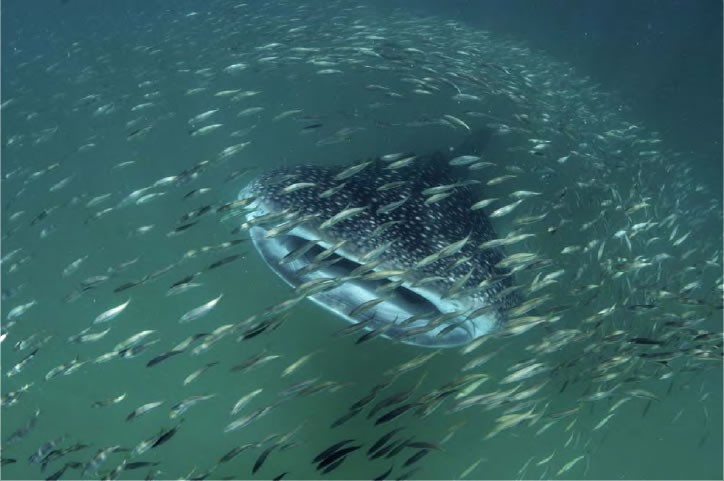Decoding Dolphin Talk: Are We Smart Enough?
We humans have wanted to be able to “talk” to dolphins for as long as anyone can remember. They beguile us with their intelligence, curiosity, playfulness, and sophisticated level of sociality. We sense, intuitively, that there are many layers of complexity to dolphin communication – as there are to dolphin minds – but we have yet to translate most of that recognition into a meaningful and productive path toward two-way communication with them.
As Denise Herzing concedes in her engaging TED talk “Could we speak the language of dolphins?” we do not have a Rosetta Stone. But why? Surely, if we can travel to Mars, cure disease and create symphonies, we should be able to figure out what dolphins are saying. But in fact, despite the sophisticated and high-tech ways in which we have applied our efforts, it is entirely possible we may never communicate with them in the way we want to.
When we think of decoding dolphinese, we mean that we would like to be able to engage in an exchange of information that looks something like this: “What are you doing?” – “I am preparing to show my child how to find fish in the sand with echolocation.” – “Oh, that sounds great.” – and so on. A simple conversation like this is still way beyond our reach.
Despite the sophisticated and high-tech ways in which we have applied our efforts, it is entirely possible we may never communicate with them in the way we want to.— Lori Marino
Herzing’s pioneering work is distinctive because it incorporates the components of earlier studies on dolphin communication in captivity by other prominent scientists, i.e., a whistle-based interface, a keyboard component, etc., within the framework of the natural behavior of these animals. But is our species really smart enough to figure out a communication system that may not only be at least as complex as our own but based on different acoustic principles and dimensions? Are we going to hit a “glass ceiling” in our understanding?
Human language consists of vocabulary and syntax. Syntax determines the structure of a language and how vocabulary is modified to create new meanings. Vocabulary is more straightforward; it’s easier for those of us studying a second language to learn vocabulary words by connecting one word with one object. Syntax is quite another matter and much more difficult, as anyone who has attempted to correctly conjugate verbs in Spanish will tell you!
Our relative ease with vocabulary is analogous to our ability to learn the lexicon of dolphin communication. As Herzing correctly points out, dolphin signature whistles are what researchers have studied the most – for the very reason that they are easy to measure. But dolphin communication also includes body posture, touch and different acoustic variables like echolocation, whistles and burst-pulsed sounds. And we can interpret sounds that are directly correlated with individuals, specific behaviors, or specific contexts more easily than sounds that seem to vary from one situation to another. That’s because the human brain is very good at picking up patterns of correlation. We are so good at attending to “what” goes with “what” that we often create false positives known as illusory correlations. So contact calls, alarm calls, signature whistles and other sounds with a more-or-less one-to-one correspondence with a behavior or context are going to be the first to give up their secrets because they are most like the vocabulary of a second human language.
Likewise, we’re very good at teaching human words to other species such as dolphins, birds, great apes and dogs. Part of our success at this has to do with the fact that this task is easy for us.
What we don’t know, however, is the basic nature of dolphin communication – whether it is dimensional or categorical or some combination of both. And we don’t know if they are combining components in ways outside of our experience and, thus, invisible to us.
Dolphin whistles have been sampled, statistically-parsed and then analyzed to determine whether certain whistle types can be predicted from the same or another whistle type. Results show that dolphin whistle repertoires contain higher-order internal structure or organizational complexity. This suggests that their whistle “language” contains elements loosely analogous to grammar or syntax in human language. And, in her talk, Denise Herzing compared spectrograms of human language words and burst pulsed sounds made by a dolphin. Who could tell the difference?
So, we know there is complexity in dolphin communication, but we don’t know the content or depth or nature of the vast majority of it.
But irrespective of whether we are intelligent enough to “decode” dolphin communication, it is worth reminding ourselves that we continue to turn a deaf ear to arguably more important messages that spell out distress, poor welfare, psychological trauma and high mortality when they are captured and confined in tanks and made to perform. A colleague of mine once said that if only the dolphins murdered annually in Taiji, Japan or the Faroe Islands could say something like “Stop it. You’re hurting me!” all abuse would probably cease immediately due to the shock of hearing those words come from the victims.
Unfortunately, we have not made the same effort to “decode” dolphin dignity and personhood. And that’s certainly worth some study.
http://on.ted.com/Herzing


